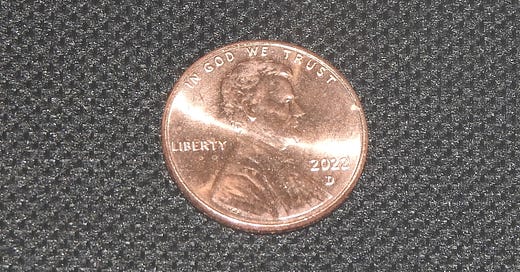Less than net one cent per kilowatt-hour to keep Diablo Canyon running
The likely cause is the plant is essentially fully-depreciated
PG&E's Diablo Canyon Power Plant (DCPP) is an incredible bargain during extended operations. CGNP believes the underlying reason is that PG&E fully depreciated the plant by 2025. PG&E's ratepayers essentially paid early for the plant via their increased rates between 2017 and 2024. PG&E's ratepayers paid more for the "cost of capital" as a consequence of the second round of DCPP accelerated depreciation.
First, some background. CGNP was the lone party of 55 that continually advocated for DCPP extended operations in the 2016 CPUC proceeding A.16-08-006 that planned to shut down the plant in 2025. Some of the details are found at the GreenNUKE website
and at the CGNP website at
https://CGNP.org
CGNP recognized DCPP was economical in its operation even if the plant were wastefully closed in 2025 after only 40 years of operation, long before its design lifetime of a century. CGNP was one of the groups that advocated for extended operations. Nuclear advocates were able to convince California Governor Gavin Newsom to extend DCPP operations at least until 2030. Governor Newsom signed SB 846 on September 2, 2022. The CPUC finally endorsed DCPP extended operations at the last possible minute on December 14, 2023.
A new CPUC Proceeding A.24-03-018 was opened on March 29, 2024 when PG&E filed for rate recovery for the initial period of DCPP extended operations running from September 1, 2023 to December 31, 2025. This is a period of 852 days. CGNP is a Party to this Proceeding. Opening Direct Testimony of interested Parties was requested by COB on Monday, July 28, 2024. The completion of CGNP's Opening Direct Testimony required a few hours beyond this deadline, so CGNP filed a Motion for Leave to Late-file its Opening Direct Testimony. CGNP's motion has already been accepted by the CPUC Docket Office and is awaiting a Decision from the administrative law judge in the case.
CGNP's key finding was obtained by dividing PG&E's DCPP net cost forecast of $418,407,000.00 by the number of megawatt-hours (46,519,200 MWh) the plant would be producing if it ran 100% the time during this period. (PG&E must supply the replacement power any time the plant is not producing power, such as during an outage.) The net result was $8.9858 / MWh. Since there are 1,000 kilowatt-hours (kWh) in a MWh, this corresponds to only 0.8958 net cents per kWh. This net cost is similar to the cost of running a large hydroelectric dam, the least-expensive means of grid-scale electric power production. The spreadsheet on page WP 8-7 from PG&E's March 29, 2024 workpapers shows DCPP produced 51,890,536.64 MWh (51.89 TWh) between 2021-2023. CAISO valued this electricity at $3,274,208,674.88, or about $3.27 billion, with almost half of that value provided in 2022. Lazard in April, 2023 estimated the cost of extending operations of a nuclear power plant at $32.00 / MWh. [1] CGNP believes Lazard's cost estimate includes the substantial cost of capital when a plant is depreciated over an extended time frame in the 60-80 year range. CGNP is aware of the possibility that some DCPP costs are not included in PG&E's forecast. Thus, our filing requests any relevant additional DCPP cost information from PG&E.
CGNP's research uncovered a relevant PG&E supplementary filing regarding DCPP costs dated March 29, 2024. We discuss several details from this supplementary filing in our Opening Direct Testimony. Since this supplementary filing is not yet included in the Docket for this Proceeding, we invited PG&E to place the filing into the Docket.
Finally, DCPP's owners are not economically compensated for providing substantial synchronous grid inertia (SGI) to the California power grid. CGNP located a relevant 2018 filing from ERCOT, the Texas grid operator that underscores the economic value of nuclear power plants. Nuclear power plants contribute substantial capacity and SGI. ERCOT considers SGI so important that they post the current SGI value at their overview dashboard. CAISO should emulate ERCOT in properly valuing DCPP for its abundant capacity and SGI contribution to stabilize the California grid.
[1] https://www.lazard.com/media/ruwg1jol/lazards-lcoeplus-april-2023.pdf See page 10 of 57.







CGNP's Letter to the Editor was published in the August 11, 2024 San Luis Obispo (California) Tribune print edition on page 10B.....
Regrettably, your August 7, 2024 editorial (on page 9B of the August 11, 2024 print edition) continues your pattern of amplifying the voices that oppose Diablo Canyon. What about giving a voice to plant advocates for a change?
Independent nonprofit Californians for Green Nuclear Power (CGNP) is providing testimony in the Diablo Canyon cost proceeding underway before the CPUC.
One of the important provisions of California SB 846 is that any market revenues in excess of the cost to run Diablo Canyon during extended operations will be refunded to ratepayers. CGNP analyzed the market revenues provided to DCPP's owners and their costs between 2021 to 2023. If the SB 846 rules were applied, California ratepayers would have been entitled to a rebate totaling $1.313 billion.
That's enough to make a very positive difference for ratepayers. Since the plant will be essentially ineligible for cost recovery during extended operations, costs should diminish.
Keep Diablo Canyon running.
One of CGNP's technical consultants noted we are discussing Diablo Canyon Power Plant's (DCPP's) net cost. Thus, the article text has been corrected. CAISO recognizes the significant economic value of DCPP's reliable power. In 2022, when the California power grid was severely stressed, the economic value assigned to DCPP's delivered power of 17,645,318.25 MWh was $1.485 billion. That works out to an average 2022 value of $84.17 / MWh. Net cost equals generation cost less economic value.